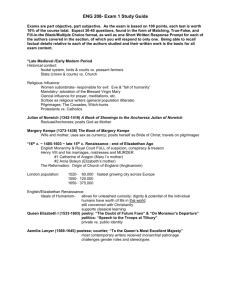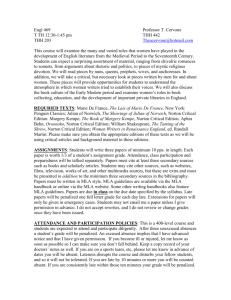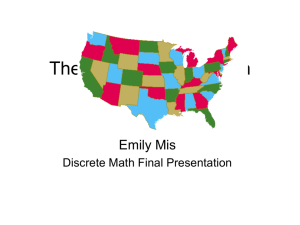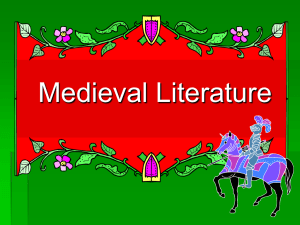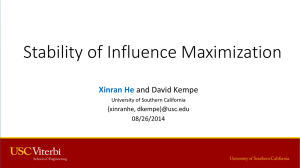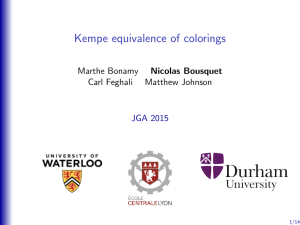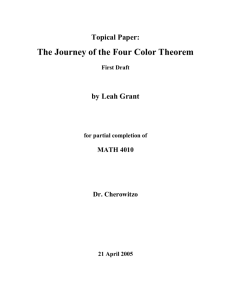Book of Margery Kempe
advertisement
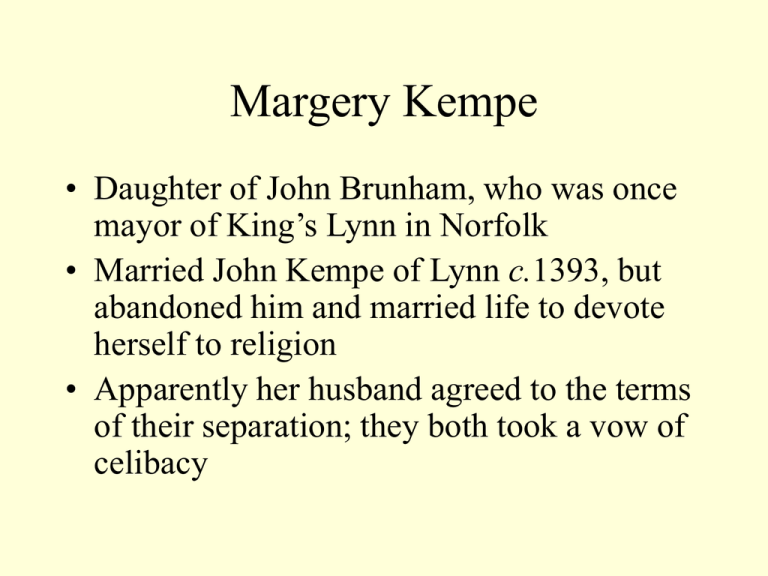
Margery Kempe • Daughter of John Brunham, who was once mayor of King’s Lynn in Norfolk • Married John Kempe of Lynn c.1393, but abandoned him and married life to devote herself to religion • Apparently her husband agreed to the terms of their separation; they both took a vow of celibacy Margery Kempe • Kempe had clearly fulfilled her marital responsibilities—she and her husband had 14 children • Kempe made a spectacle of herself with her noisy weeping during her visions • Traveled widely on pilgrimages to Jerusalem, Rome, Compostella, and various other sites Book of Margery Kempe • Recounts Kempe’s visions and experiences with great vividness • Experiences recounted include temptations to lechery, travels, and accusations of heresy Book of Margery Kempe • Kempe was illiterate, so she had to dictate her book in two parts to two different scribes • The second scribe was a priest, and he revised the whole text, making one wonder what other changes he might have made Book of Margery Kempe • Experts assure us that the work still has Kempe’s characteristic touch, despite the editorial changes • The work isn’t a mystical text in the strictest sense, so it doesn’t have that sort of appeal Why do we study The Book of Margery Kempe? • Kempe’s style is vigorous and readable and the subject matter is generally interesting • The work is an early example of autobiography, providing insight into life in the late middle ages Julian of Norwich • Was a recluse in a cell attached to the church of St. Julian at Norwich • Wrote Sixteen Revelations of Divine Love (c.1393) describing visions revealed to her during her illness in 1373 and her reflections on them Julian of Norwich • We know next to nothing about Julian, aside from the information that she provides in A Book of Showings • Julian’s description of her “showings” or revelations is precise—we know the exact date of the visions: May 13, 1373 Julian of Norwich • There are two versions of A Book of Showings: a short version and a long version • Long version of Showings contains Julian’s commentary, which was result of years of contemplation, study, and prayer on visions Julian of Norwich • Julian developed some rich and incredibly complex theological concepts during her contemplation of the visions • Showings is the work of an accomplished prose stylist, and a thoughtful Christian theologian and mystic
